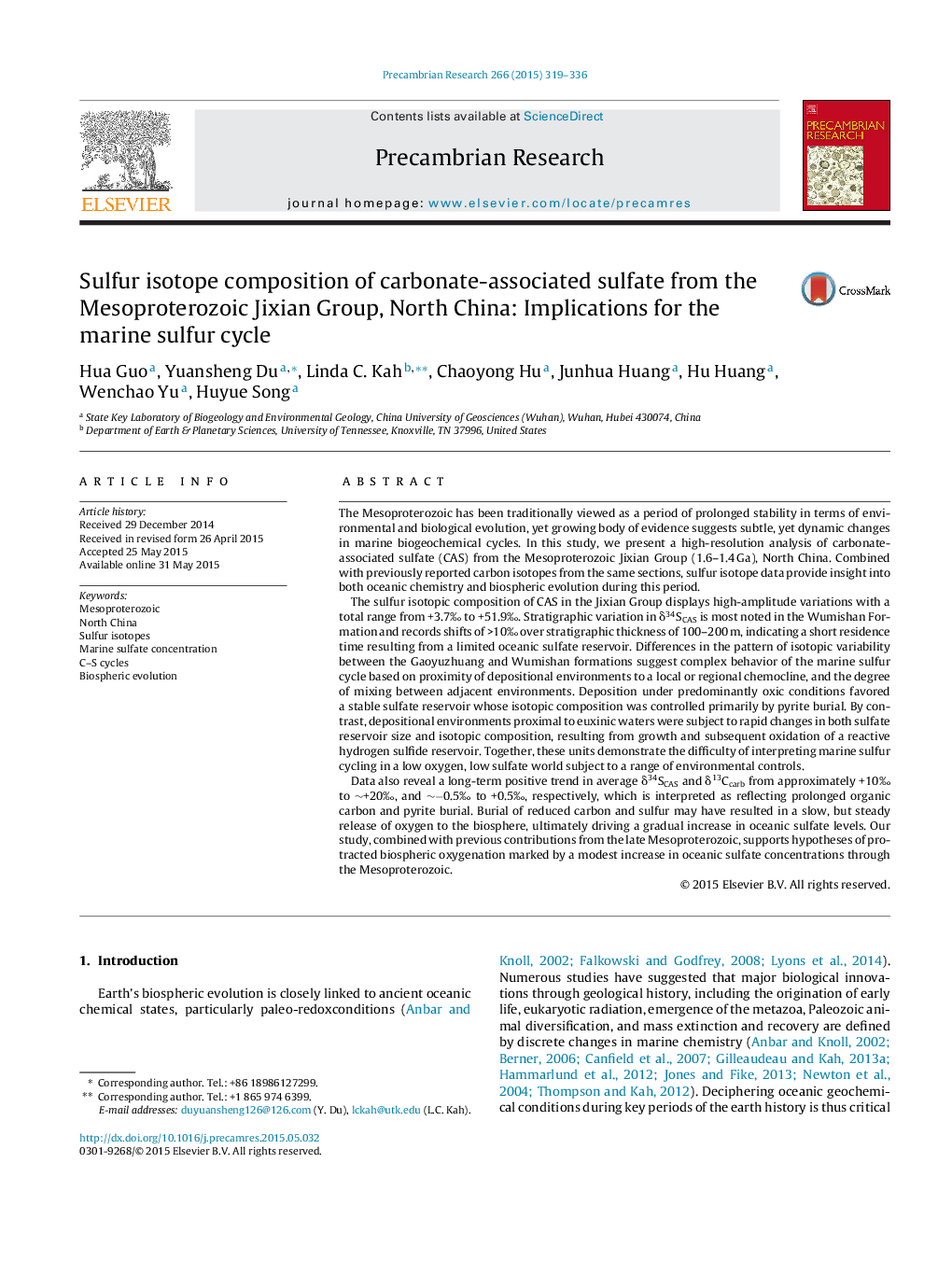| کد مقاله | کد نشریه | سال انتشار | مقاله انگلیسی | نسخه تمام متن |
|---|---|---|---|---|
| 4722546 | 1639609 | 2015 | 18 صفحه PDF | دانلود رایگان |

• We report S-isotope data from the Mesoproterozoic Jixian Group, North China.
• Spatially heterogeneity in δ34SCAS indicates an extremely small sulfate reservoir.
• S-isotope variations maybe controlled by oxidation of reactive hydrogen sulfide.
• C–S isotopes support a gradual biospheric oxygenation through early Mesoproterozoic.
The Mesoproterozoic has been traditionally viewed as a period of prolonged stability in terms of environmental and biological evolution, yet growing body of evidence suggests subtle, yet dynamic changes in marine biogeochemical cycles. In this study, we present a high-resolution analysis of carbonate-associated sulfate (CAS) from the Mesoproterozoic Jixian Group (1.6–1.4 Ga), North China. Combined with previously reported carbon isotopes from the same sections, sulfur isotope data provide insight into both oceanic chemistry and biospheric evolution during this period.The sulfur isotopic composition of CAS in the Jixian Group displays high-amplitude variations with a total range from +3.7‰ to +51.9‰. Stratigraphic variation in δ34SCAS is most noted in the Wumishan Formation and records shifts of >10‰ over stratigraphic thickness of 100–200 m, indicating a short residence time resulting from a limited oceanic sulfate reservoir. Differences in the pattern of isotopic variability between the Gaoyuzhuang and Wumishan formations suggest complex behavior of the marine sulfur cycle based on proximity of depositional environments to a local or regional chemocline, and the degree of mixing between adjacent environments. Deposition under predominantly oxic conditions favored a stable sulfate reservoir whose isotopic composition was controlled primarily by pyrite burial. By contrast, depositional environments proximal to euxinic waters were subject to rapid changes in both sulfate reservoir size and isotopic composition, resulting from growth and subsequent oxidation of a reactive hydrogen sulfide reservoir. Together, these units demonstrate the difficulty of interpreting marine sulfur cycling in a low oxygen, low sulfate world subject to a range of environmental controls.Data also reveal a long-term positive trend in average δ34SCAS and δ13Ccarb from approximately +10‰ to ∼+20‰, and ∼−0.5‰ to +0.5‰, respectively, which is interpreted as reflecting prolonged organic carbon and pyrite burial. Burial of reduced carbon and sulfur may have resulted in a slow, but steady release of oxygen to the biosphere, ultimately driving a gradual increase in oceanic sulfate levels. Our study, combined with previous contributions from the late Mesoproterozoic, supports hypotheses of protracted biospheric oxygenation marked by a modest increase in oceanic sulfate concentrations through the Mesoproterozoic.
Journal: Precambrian Research - Volume 266, September 2015, Pages 319–336